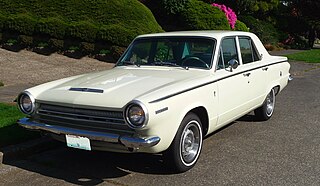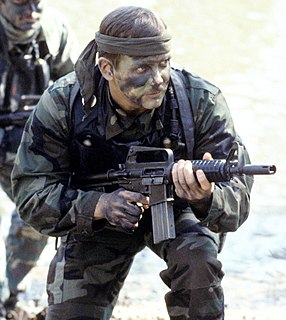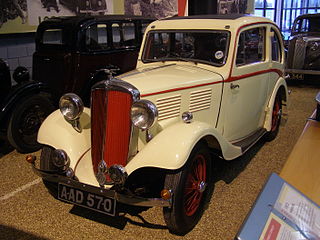Related Research Articles

The REO Motor Car Company was a company based in Lansing, Michigan, and producing automobiles and trucks from 1905 to 1975. At one point the company also manufactured buses on its truck platforms.

The Volkswagen Jetta is a compact car/small family car manufactured and marketed by Volkswagen since 1979. Positioned to fill a sedan niche above the firm's Golf hatchback, it has been marketed over seven generations, variously as the Atlantic, Vento, Bora, City Jetta, Jetta City, GLI, Jetta, Clasico, and Sagitar.

The Ford Thunderbird is a personal luxury car produced by Ford from model years 1955 to 1997 and 2002 to 2005 throughout 11 distinct generations. Introduced as a two-seat convertible, the Thunderbird was produced in a variety of body configurations. These included a four-seat hardtop coupe, four-seat convertible, five-seat convertible and hardtop, four-door pillared hardtop sedan, six-passenger hardtop coupe, and five-passenger pillared coupe, with the final generation designed again as a two-seat convertible.

The Hudson Motor Car Company made Hudson and other branded automobiles in Detroit, Michigan, U.S., from 1909 to 1954. In 1954, Hudson merged with Nash-Kelvinator to form American Motors Corporation (AMC). The Hudson name was continued through the 1957 model year, after which it was discontinued.

The Dodge Dart is a line of automobiles marketed by Dodge from the 1959 to 1976 model years in North America, with production extended to later years in various other markets.

The Colt Automatic Rifle-15 or CAR-15 was a family of M16 rifle based firearms marketed by Colt in the 1960s and early 1970s. However, the term "CAR-15" is most commonly associated with the Colt Commando(AKA: XM177); these select-fire carbines have ultrashort 10.5-inch (270 mm) and 11.5-inch (290 mm) barrels with over-sized flash suppressors.

The Nissan S30 is the first generation of Z GT 3-door two-seat coupés, produced by Nissan Motors, Ltd. of Japan from 1969 to 1978. One of the most successful sports car lines ever produced, the trend-setting S30 was designed by a team led by Yoshihiko Matsuo, the head of Nissan's Sports Car Styling Studio.

A coupling is a mechanism used to connect rolling stock in a train. The design of the coupler is standard, and is almost as important as the track gauge, since flexibility and convenience are maximised if all rolling stock can be coupled together.

Trojan was a British automobile manufacturer producing light cars between 1914 and 1965, and light commercial vehicles for a short time.

The DMC DeLorean is a rear-engine, two-door, two-passenger sports car manufactured and marketed by John DeLorean's DeLorean Motor Company (DMC) for the American market from 1981 to 1983—ultimately the only car brought to market by the fledgling company. The DeLorean is sometimes referred to by its internal DMC pre-production designation, DMC-12. However, the DMC-12 name was never used in sales or marketing material for the production model.

The Toyota Mark II is a compact, later mid-size sedan manufactured and marketed in Japan by Toyota between 1968 and 2004. Prior to 1972, the model was marketed as the Toyota Corona Mark II. In some export markets, Toyota marketed the vehicle as the Toyota Cressida between 1976 and 1992 across four generations. Toyota replaced the rear-wheel-drive Cressida in North America with the front-wheel-drive Avalon. Every Mark II and Cressida was manufactured at the Motomachi plant at Toyota, Aichi, Japan from September 1968 to October 1993, and later at Toyota Motor Kyushu's Miyata plant from December 1992 to October 2000, with some models also assembled in Jakarta, Indonesia as the Cressida.

The Austin Westminster series are large saloon and estate cars that were sold by the British manufacturer Austin from 1954, replacing the A70 Hereford. The Westminster line was produced as the A90, A95, A99, A105, and A110 until 1968 when the new Austin 3-Litre took its place. Essentially badge-engineered versions of the Farina Westminsters were also produced using the premium Wolseley and Vanden Plas marques. 101,634 Westminsters were built.

The Mitsubishi Chariot is a small multi-purpose vehicle (MPV) manufactured and marketed by Mitsubishi from 1983 to 2003. Based on the SSW concept car first exhibited at the 23rd Tokyo Motor Show in 1979, the MPV derives its nameplate from chariots used by the ancient Greek and Roman Empires.

The Hyundai Stellar is a mid-size rear-wheel drive automobile produced by the Hyundai Motor Company to succeed the soon to be replaced Ford Cortina that Hyundai were building under licence. The Stellar was launched in July 1983. The Stellar was designed by Giorgetto Giugiaro, but the chassis from the Cortina Mark V was kept.

The Flak 30 and improved Flak 38 were 20 mm anti-aircraft guns used by various German forces throughout World War II. It was not only the primary German light anti-aircraft gun but by far the most numerously produced German artillery piece throughout the war. It was produced in a variety of models, notably the Flakvierling 38 which combined four Flak 38 autocannons onto a single carriage.

The Bentley R Type is the second series of post-war Bentley automobiles, replacing the Mark VI. Essentially a larger-boot version of the Mk VI, the R type is regarded by some as a stop-gap before the introduction of the S series cars in 1955. As with its predecessor, a standard body was available as well as coachbuilt versions by firms including H. J. Mulliner & Co., Park Ward, Harold Radford, Freestone and Webb, Carrosserie Worblaufen and others.

The Besa machine gun was a British version of the Czechoslovak ZB-53 air-cooled, belt-fed machine gun.

The Standard Ten was a model name given to several small cars produced by the British Standard Motor Company between 1906 and 1961. The name was a reference to the car's fiscal horsepower, a function of the surface area of the pistons. This system quickly became obsolete as an estimate of the power produced by the engine, but it continued to be relevant as a way to classify cars for tax purposes. Like other manufacturers, Standard continued to use the name to define the approximate size of their 'Ten' model long after the origins of the name had, in Britain, become inapplicable.

Scripps-Booth was a United States automobile company based in Detroit, Michigan. Established by James Scripps Booth in 1913, Scripps-Booth produced motor vehicles and was later acquired by General Motors, becoming a division of it, until the brand was discontinued in 1923.

The 20 mm AA Machine Cannon M/38 was a 20 mm rapid fire autocannon produced by the Danish company Dansk Industri Syndikat (DISA). The gun, which could be adapted to several tactical uses, was a primary weapon of the military of Denmark. It was also exported to numerous countries around the world because of its versatility. The cannon was built at the DISA works in Herlev near Copenhagen. The company supplied several different types of mountings with the weapon which allowed it to be employed in a variety roles such as aerial defences, anti-tank warfare or on naval ships.
References
- 1 2 3 Georgano, Nick (2000). The Beaulieu Encyclopedia of the Automobile. London: Stationery Office. p. 1792. ISBN 0117023191.
- 1 2 Kimes, Beverly Rae (1996). The Standard Catalog of American Cars: 1805-1942. Iola, IA: Krause Publications. p. 1612. ISBN 0873414284.